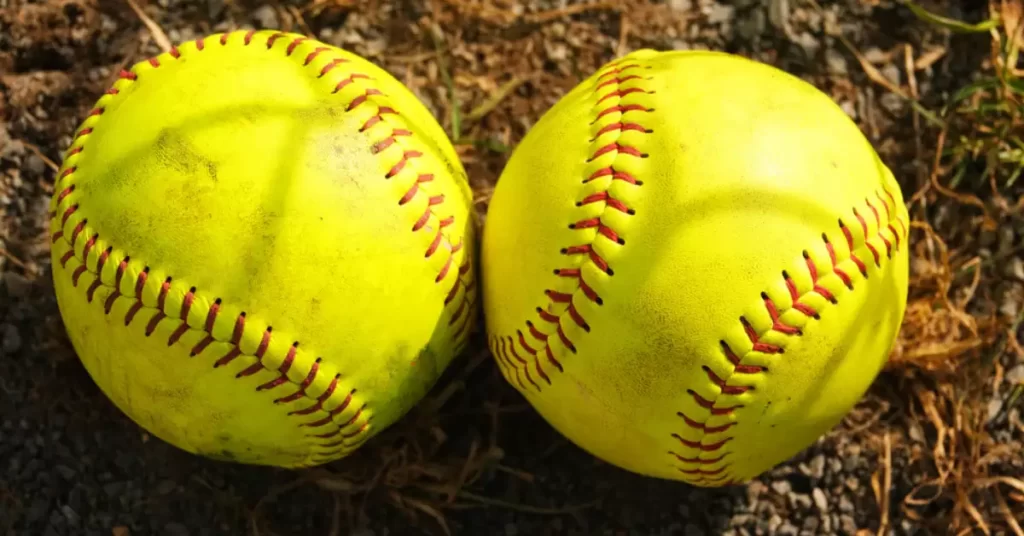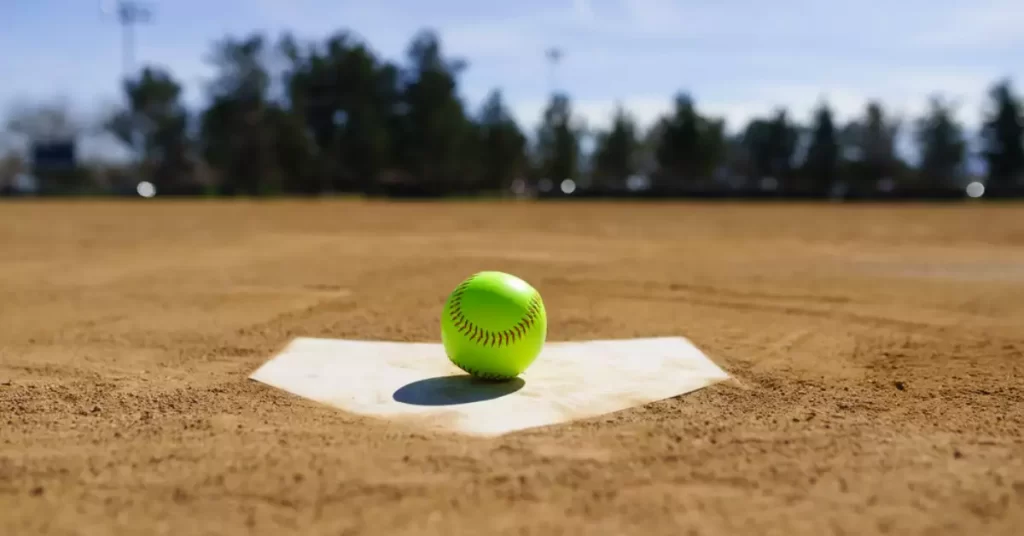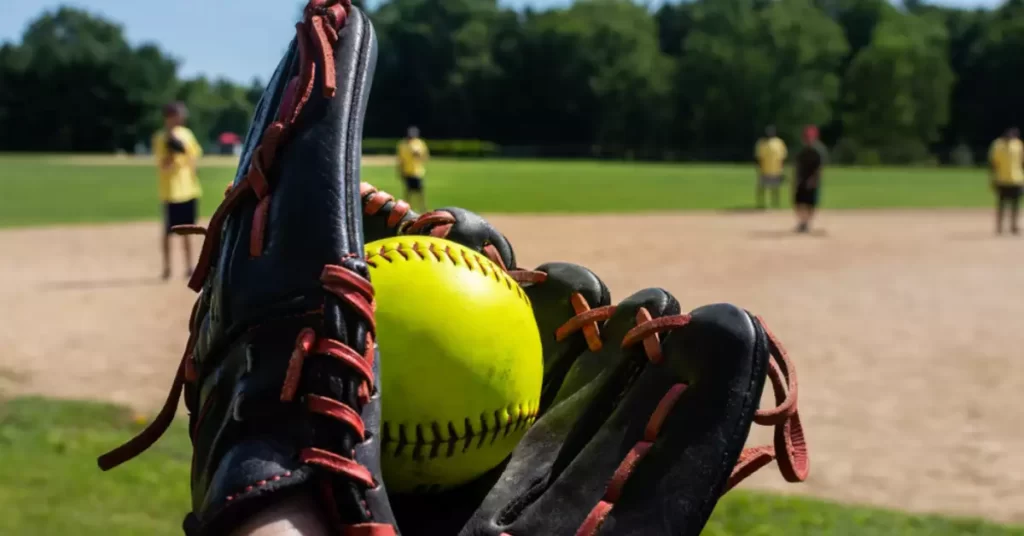Softball, a widely popular sport, enthralls players and spectators alike with its dynamic gameplay and competitive spirit. One crucial element of this game, the softball, may appear similar to a baseball, but in reality, it’s quite different. Accurate knowledge of its dimensions is essential for both players and enthusiasts.
The diameter of a standard softball, measured in centimeters, is approximately 9.7 cm (3.82 inches) for fastpitch games and 10.9 cm (4.3 inches) for slowpitch games. These measurements are based on the regulations set forth by prominent softball governing bodies, ensuring consistency across the sport.
Now that you’ve got a glimpse of the softball’s size, let’s dive deeper into the intriguing world of this exciting sport. Discover the importance of understanding its dimensions, how they impact gameplay, and other vital information that every softball aficionado should know. Don’t miss out on the captivating details that will enrich your appreciation for the game!
Brief History of Softball
Softball was invented in 1887 as an indoor alternative to baseball. Initially called “indoor baseball,” it quickly gained popularity and evolved into the sport we know today. Over time, softball developed distinct variations with different rules and equipment, including the size of the ball used in the game.

Official Softball Sizes
There are three main types of softball games: fastpitch, slowpitch, and youth softball. Each type uses a ball with a specific size and weight.
Fastpitch Softball Size
The standard size for a fastpitch softball is 30.5 cm (12 inches) in circumference and 9.7 cm (3.82 inches) in diameter. Fastpitch softballs are typically used in competitive leagues and college-level games.
Slowpitch Softball Size
Slowpitch softballs are slightly larger than their fastpitch counterparts, with a circumference of 34.3 cm (13.5 inches) and a diameter of 10.9 cm (4.3 inches). These softballs are typically used in recreational and co-ed leagues.
Youth Softball Size
For younger players, a smaller softball is used to accommodate their developing skills. Youth softballs typically have a circumference of 27.9 cm (11 inches) and a diameter of 8.9 cm (3.5 inches). These balls are used in games for players aged 12 and under.

Measuring the Diameter of a Softball
To measure the diameter of a softball, you can use a caliper or a flexible measuring tape. Place the caliper or tape across the widest part of the ball, ensuring it’s snug but not tight. The measurement you get represents the diameter of the softball in centimeters.
The Importance of Softball Size
The size of a softball plays a significant role in the game’s dynamics. A larger ball is easier to hit and catch but is more difficult to pitch accurately and quickly. Conversely, a smaller ball can be challenging for inexperienced players but allows for faster pitching speeds and greater control.
Factors that Affect Softball Size
Several factors can affect the size of a softball, including:
Material
Softballs are made from various materials, such as cork, rubber, or a combination of the two. The material used can impact the ball’s size, weight, and overall performance.
Construction
The way a softball is constructed, including its stitching and core, can also affect its size. For example, a ball with a higher compression core may be slightly smaller than one with a lower compression core.
Manufacturing Tolerances
Manufacturers have specific tolerances for the production of softballs. Although these tolerances are usually small, they can result in slight variations in size between individual balls.

How to Choose the Right Softball Size
When selecting a softball, it’s essential to consider the league or level of play in which the ball will be used. Most leagues and organizations have specific requirements for ball size, so it’s best to consult their guidelines before making a purchase. Additionally, consider the age and skill level of the players, as well as the type of game (fastpitch, slowpitch, or youth) being played.
How Softball Size Affects Gameplay
The size of a softball can significantly impact the game. A larger ball can be easier for batters to see and hit, while a smaller ball can be more challenging to make contact with but allows pitchers to achieve faster speeds and better control. Additionally, larger softballs tend to travel shorter distances when hit, while smaller balls can be hit farther.
Comparing Softball and Baseball Sizes
Although softballs and baseballs may look similar, there are notable differences in their sizes. Baseballs are smaller, with a circumference of approximately 22.9 cm (9 inches) and a diameter of 7.3 cm (2.86 inches). In contrast, even the smallest softballs are larger, making it easier to see and hit in the game.

Frequently Asked Questions
Are all softballs the same size?
No, softballs come in various sizes, with the most common being 30.5 cm (12 inches), 34.3 cm (13.5 inches), and 27.9 cm (11 inches) in circumference for fastpitch, slowpitch, and youth games, respectively.
Can you use any size softball for practice?
While you can use any size softball for practice, it’s best to use the same size ball that will be used in actual games to ensure consistency and develop proper skills.
Why do some softballs have different colors?
Softballs may be different colors for various reasons, such as improved visibility, league requirements, or simply aesthetics. Yellow softballs are common, as they are easier to see against most backgrounds.
Conclusion
As we’ve explored the dimensions of a softball, it’s clear that its size plays a pivotal role in shaping the sport’s unique characteristics. With a diameter of approximately 9.7 cm (3.8 inches), the softball is designed to ensure a fair and enjoyable experience for players of varying skill levels.
Having a thorough understanding of the softball’s size not only enhances your knowledge of the sport but also contributes to your appreciation for its intricacies. As you continue to learn more about softball, remember to keep the ball’s dimensions in mind as they are vital to the game’s core mechanics and strategies.
